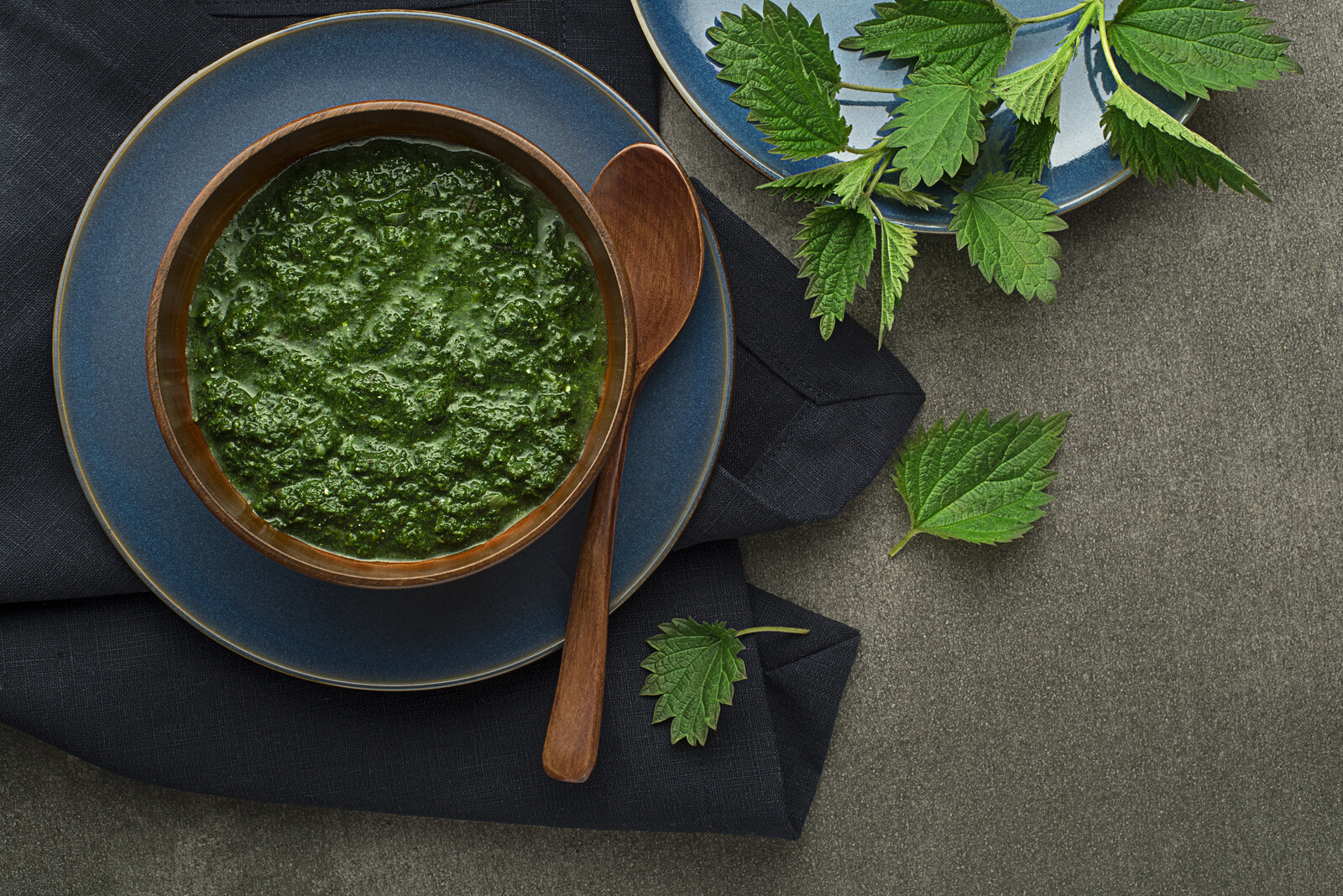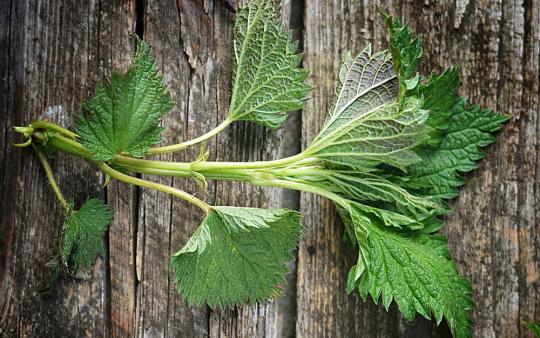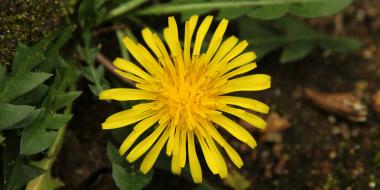One of my favourite herbs to see appear in the spring are stinging nettles. Not only are they a plant superfood, they’re also a super medicine! The young leaves are protein-and mineral-rich and can be great additions to both soups and stews. Nettles are one of the most nourishing and (despite their prickly name) gentle herbs, offering support for the whole body! As revered herbalist David Hoffman asserts, “When in doubt, give nettles.”
Nettles are native to both North America (Urtica dioica) and Europe (Urtica urens) and grow well and freely, especially in nutrient-rich soils that have been previously disturbed by people. Urtica dioica can grow up to two metres tall and features downy, heart-shaped, deeply serrated leaves that are covered with stinging hairs which release fluid (which includes formic acid, histamine, acetylcholine, and serotonin) from capsules at the base of each hair when touched. Flowers are green, with yellow stamens growing in branched clusters springing from the axils of the leaves. Usually a nettle plant will bear both male and female flowers, giving the species its name, dioica, meaning “two houses.”
While most herbalists welcome nettles with open arms, it’s important to be aware of their eponymous sting before inviting them into your garden. Even the slightest touch can trigger its needle-like hairs to inject fluid that causes an immediate skin reaction often accompanied by burning, itching, or tingling. Some folks, however, swear this reaction—called urtication—relieves rheumatic pain! I will never forget watching my grandparents go into the woods to pick nettle and proceed to beat themselves with it, claiming that it helped their circulation and arthritic aches!
A Close-Up on Stinging Nettle
Genus: Urtica dioica
Common name: Nettle, stinging nettle, great or greater nettle
Parts used: Leaf, root, seeds
Taste: Salty, sweet (young shoots and leaves), earthy
Energy: Cooling, drying, tonifying, stimulating
Active constituents: Flavonoids (glucosides of quercetin), indolamines (histamine, choline, acetylcholine and serotonin (5HT) particularly in stinging hairs), chlorophyll, carotenoids, beta carotene, xanthophylls, vitamins A, C, calcium, potassium salts, iron, and silicic acid, tannic, gallic, and formic acids
Dosage
Tincture: (1:5): 5 ml, 3 times daily
Tea: 1-3 tsp dried herb. Add 8 oz hot water, steep for 10–15 mins. Drink 3 cups daily.
Fresh: herb, orally, as needed, as counterirritant. As a note of caution, do not use as counterirritant on children - or adults! - without consent.
10 Health Benefits of Nettles
Nettles can help strengthen our vital organs, including the immune system, making it a supportive herb for so many illnesses. In fact, there are entire books dedicated to nettle’s benefits! Safe for children, nettles can be eaten, steeped as a tea, or taken as a tincture or supplement. Long-known for its antihistamine capabilities, nettle can help take the sting out of seasonal allergies! According to 17th century medical herbalist Nicholas Culpepper, nettles “…consume the phlegmatic superfluities of the body of man that the coldness and moisture of winter has left behind. Opens the passages of the lungs and helps to expectorate phlegm.”
Kidney keeper
Nettle can help rejuvenate and protect the kidneys, treat inflammation in the urinary tract, and acts as a diuretic, flushing out toxins.
Inflammation ender
Good for supporting conditions associated with inflammation like rheumatoid arthritis and sciatica, nettle’s anti-inflammatory properties can also help strengthen and stimulate the immune system.
Burn-out buster
Nettle can also help those who are mentally or emotionally depleted by improving overall wellness and energy levels.
Breath booster
Nettle may strengthen the lungs and help with respiratory illnesses including asthma and bronchitis.
System supporter
Nettle has been known to settle digestive upset, help with both constipation and diarrhea, and help heal the gastrointestinal tract, making it useful for those with IBS or Crohn’s disease. It can nourish and calm adrenal glands, and nettle’s immune modulating properties make it supportive for those with autoimmune diseases.
Menstruation manager
Nettle may also help regulate the menstrual cycle, and lessen associated symptoms like cramps, bleeding, and hormonal swings. Can also support hot flashes in menopause.
Pregnancy preparer
An excellent supportive herb for pregnancy, nettle tonifies the uterus and encourages milk supply.
Skin saviour
With its skin-soothing capabilities, nettle brings relief when applied topically to skin ailments like sunburn, eczema, acne, and poison ivy.
Hair repairer
Believed to stimulate hair growth and reduce dandruff when infused and applied to scalp or hair.
Heart helper
Nettle stimulates circulation, and lowers blood pressure and blood sugar levels. It can also help both clot and thin blood, depending on the need.
Using Nettles as a Natural Herbal Remedy
Combine nettle with some of the following herbs for an extra boost of healing goodness!
Skin irritation topical Jewelweed (Impatiens capensis), and yarrow (Achillea millefolium)
Pregnancy tonic Red raspberry leaf (Rubus idaeus), alfalfa (Medicago sativa), marshmallow leaf (Althea off. fol.), and rosehips (Rosa canina)
Cardiovascular tonic Hawthorn (Crataegus spp.)
Nettle Soup

Adapted from a recipe by John Redden, RH.
Ingredients
- 3 tbsp unsalted butter, ghee, or avocado oil
- 1 white onion, chopped
- 1 garlic clove, minced
- 4 c stock of choice
- 1 tsp dried thyme
- ½ tsp nutmeg, freshly grated
- salt to taste
- 1 lb lean white wild-caught fish or 1 large russet potato, roughly chopped
- 1 lb nettles
- sour cream and black pepper for garnish (optional)
Instructions
- Wearing gloves, use scissors to trim away the stems from the nettle tops, then wash the tops well.
- In large saucepan, cook onions in butter over medium heat until soft and translucent. Add garlic and cook for another minute.
- Pour in stock and add the thyme, nutmeg, salt, fish (or potato), and nettles. Bring to a gentle simmer and cook for 15-20 minutes. You want the nettles to be very tender.
- When the nettles are ready, taste the soup and add more salt and nutmeg if it needs it. You want to be able to taste the nutmeg in the final dish.
- Purée soup in a blender. Pour back into saucepan and let sit over low heat until warmed through.
- Serve with a dollop of sour cream and some black pepper, if desired.
While there are no known contraindications, always consult your healthcare provider before including a new herb into your routine.
Want to learn more? Check out more EcoParent, including more wild-edible weeds, how to get your kids into the joy of gardening, and balancing risk and reward with outdoor play.








